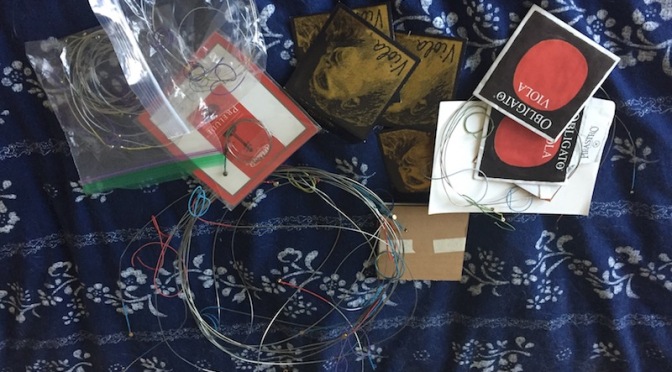The book by Madeleine L’Engle on which this movie was based was one of my childhood favorites. I looked forward to the film eagerly because I wanted to see a gifted director do justice to the material. I thought that many of the changes were promising updates for modern audiences, able to bring the book’s uplifting message of love to more people.
On an even more personal note, my still-unfinished novel, Hallie’s Cache, was inspired by A Wrinkle in Time. In both stories, a misfit young teen girl looks for her missing father and grows into herself in the process. A Wrinkle in Time was rejected from 26 publishers before going on to win the Newberry Medal and become one of the most beloved children’s books of the 20th century. There has been a previous attempt at making a movie out of this material in 2003, with mixed success. It has always defied categorization: is it for adults or children? Is it fantasy or science fiction? Is it too Christian or not Christian enough?
After watching the current version, I’m not convinced that it’s possible to make a good movie out of this book. The director, Ava Duvernay, did everything right: she assembled a great cast and approached the project with care, respect, and a wide open vision. And I enjoyed it on its own terms; I identified with Meg and her teenage problems. I found Storm Reid to be an appealing and relatable actress. I rooted for her and her friends to save her father. I loved the trippy visuals, the costumes, the animations. I even cried for the brokenness in the world, as gently as it was portrayed, and cheered for the family’s reunion. But it wasn’t the story that packed the emotional punch that I remembered and loved all these years. Opening to mixed reviews and eclipsed at the box office, it is likely to remembered, if at all, as a footnote to Duvernay’s career.
As much as I hate to admit this about a childhood favorite book, the problem is likely not with the filmmakers, but with the source material. Written in 1962, A Wrinkle in Time is of a particular time and place. The book’s characters are all European-Americans, redheads or mousy-brown-haired with Anglo-sounding names like Charles Wallace and Dennys (who, with his twin brother, is wholly absent from this movie). It famously opens with the Bulwer-Lytton cliche: “It was a dark and stormy night,” as Meg watches a thunderstorm from her lonely, cluttered attic room. For these reasons, and because of the three witches, the gossip about Mr Murry’s disappearance, and the neighbor’s sheets drying on the line, I had always pictured it taking place in an eccentric, secretive New England small town–a small town with a dark side like the ones that L’Engle herself, and her contemporary Shirley Jackson, lived in and raised their families.
Bringing this story out into the bright Southern California sunshine as this movie did took too much of the edge off. Certainly there are edgy areas of Southern California too, but we didn’t see those. The Murrys’ home is gorgeous and spacious. The middle school Meg attends is a well-resourced model of ethnic diversity headed by principal of color who is a three-time science teacher of the year award winner. This muddies the rationale for why Meg is bullied by the other students. In the book, Charles Wallace is an odd prodigy, perhaps a savant on the autism spectrum although that was not understood at the time the book was written, and Meg gets in trouble at school for defending him from bullies. She is thereby always his protector, and her actions at the end of the book, when her fierce love saves Charles Wallace from IT’s clutches, are perfectly in character and make emotional sense.
In the movie on the other hand, Charles Wallace is still a prodigy, but he appears quite well tolerated, happy, and self-contained, and he doesn’t need Meg to protect him. If anything, he is the one protecting Meg. Meg’s outcast status is instead attributed to her father’s disappearance. But in present day California, with so many children being raised by single parents and blended families, her father’s disappearance would not be the scandal it was in 1962. Her loneliness can and does lead her to act out further, but it is a feeble justification for her school situation as depicted here.
Details of what happened on Camazotz are also compressed in the movie. The book’s depiction of Camazotz, the planet that has given in to evil, gives off a sort of Kafkaesque bureaucratic banality. Complete conformity to a 1950s suburban nuclear family ideal is expected, and outsiders’ food turns to dust in their mouths. “IT,” the master controller, appears in the book as a disembodied brain on a dais. IT appeals to Charles Wallace and seduces him to ITs side because of ITs ability to control and impose order on messy human impulses. IT was a metaphor for the tyranny of a society that values and runs on brains and intellect alone and disregards love. That in the book there are two battles against IT and that Meg must make the decision on her own to return to Camazotz and rescue Charles Wallace compound the sense of foreboding and dread, as well as making Meg’s triumph sweeter and more meaningful when she does ultimately rescue him.
The movie, however, shows little of Camazotz; the scene with the kids bouncing balls in unison seems like a confusing non-sequitur rather than a Potemkin village masking the fear and desperation of the populace. After her father and Calvin are defeated, Meg is forced immediately into lonely battle with IT. This battle scene was disappointing. Some of the creepy tree-like things with branches might have supposed to have been neurons with dendritic trees, but the overall connection of the movie’s IT to an emotionless, loveless, disembodied brain capable of the ultimate in mind control was weak.
The rescue scene itself focused too much on whether Meg herself was lovable in spite of her faults and not enough on the transforming power of Meg’s sacrificial love for Charles Wallace. The book is unapologetically Christian in outlook, reflecting L’Engle’s own Christian faith and naming Jesus as one of the warriors against the darkness that enveloped Camazotz. I believe that L’Engle intended Meg’s love for Charles Wallace here to be selfless and Christlike, yet her Christian imagery and references have been dropped from the movie, to its detriment. Mrs. Who quotes and references many world religions; Christianity could have been included there. And why not acknowledge Jesus’ role, and the role of faith for many Christians, in fighting evil? True to her character, the scientist Meg would likely remain skeptical, and that would be okay too. Warriors can come from all faith traditions, and from no faith tradition.
The other big problem with this story is the science, the so-called “Wrinkle in Time” itself, known in both the movie and the book as a tesseract. Back in 1962 at the dawning of the Age of Aquarius, when the theory of relativity was new and humans hadn’t yet gone to the moon, the idea that you could bend space-time with your mind by “tuning” it to the right frequency might have been a little more believable than it is now. There is a scene in the movie in which Dr. Murry is shown giving a seminar about how tessering works. Jeers and guffaws of disbelief come from the audience; as well they would in real life. He sounds like a New Age motivational speaker in the tradition of Werner Erhard, or a trickster like Uri Geller.
I still remember when an annoying boy in my physics class explained to me what a tesseract “really” was: a cube within a cube, a projection of 4-dimensional space into 3 dimensions the way the drawing of a cube on paper as a square within a square was a projection of 3-dimensional space onto 2. There was nothing about wormholes or traveling 93 million miles with just your mind. Talk about disappointing! It wouldn’t have taken much to give Dr. Murry in the film a high-tech device that would make tessering possible, or some novel psi powers based on his and his wife’s research. These would have to be hand-wavey and entirely fictional of course, but good shows have been based on less. What doesn’t work is asking us to accept that New Age mumbo-jumbo somehow became true for this family because they “believed in themselves.”
As a smart girl who was interested in science, I believed too long in this book’s oversimplified and inaccurate version of how science works. Meg’s parents worked together in a homemade lab; when her father disappeared, her mother continued her experiments in the kitchen, bunsen burner on one counter, soup on the other. There was no mention of grants, funding, students, safety regulations, collaboration outside the family unit, or even publication. It’s a more romantic and family-friendly vision of doing science than has ever actually existed. Perhaps this vision was inspired by the real-life Curies, French Nobel Laureates Marie and Pierre and their children, who discovered radioactivity; yet their work had a visible dark side. Modern science is safer for its practitioners, and it is more open and collaborative than either what the Curies experienced or L’Engle’s vision. It is also more expensive and more technical, and requires more energy and perseverance than romantic genius for success. A film that wants to inspire young people in science in the 21st century would do well to tell a more accurate story about the scientific process. This film drops that ball completely.
I hope this movie inspires its young audience, but sadly, I don’t believe it’s memorable enough for that.



















 I thought I had everything I needed to perform the Telemann viola concerto in May. I have a viola, I have a bow, I have the green-covered music. All the orchestra parts and a score can be
I thought I had everything I needed to perform the Telemann viola concerto in May. I have a viola, I have a bow, I have the green-covered music. All the orchestra parts and a score can be 



